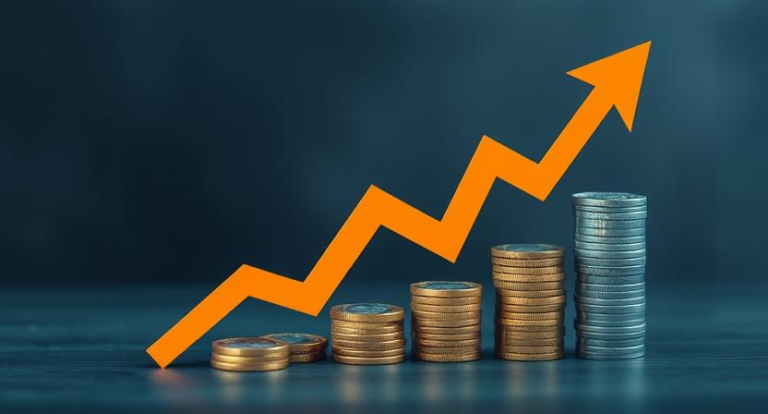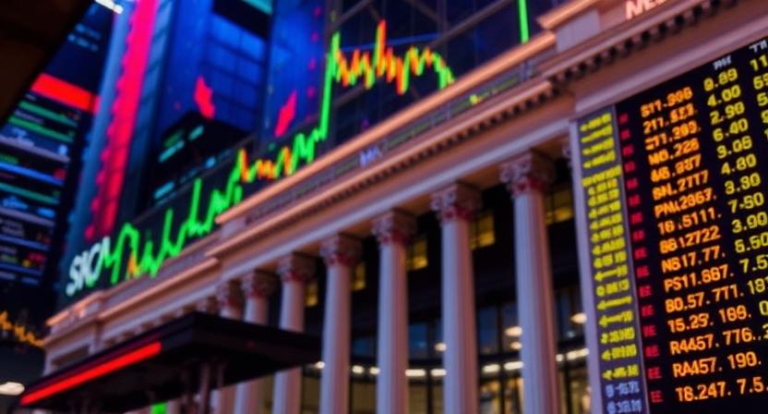There are an increasing number of ETFs on the market, and this variety can sometimes make it difficult to choose an ETF. Therefore, in this article, we’ll show you how to choose an ETF and what factors you should consider.
As we know, an ETF is a hybrid between a mutual fund and a stock. That is, it has a portfolio composed of a basket of assets (mutual funds) that are listed on the stock exchange and can be traded at a quoted price (shares) at any time while the market is open. They are generally known as ETPs (Exchange Traded Products), which encompass all the different types of ETFs available.
Choosing a Strategy
There are countless strategies in the stock market and investments, but the problem is that most lose money or yield returns below the index if applied over several years. Why does this happen? Usually, it’s because they aren’t backtested, or they use selective anecdotal evidence, or they’re based on hunches and/or subjective rules that are difficult to replicate. For this reason, the first thing we should do before choosing an ETF is to choose a proven strategy that has worked, is robust enough to continue working in the future, and has clear rules that can be replicated. It’s also important to add that this strategy must be aligned with our risk and volatility profile, time horizon, and objectives. You know, I like to divide the profile this way because risk and volatility are different things.
The Strategy is what will tell us which ETFs to buy, when to buy them, and when to sell them.
What types of strategies are there?
Some of the proven strategies that have been shown to work well are as follows:
- Passive Indexing. Recommended for periods of more than 10 years, provided that diversification, rebalancing, and periodic contributions are met.
- Use ETFs that preferably track broad and diversified equity and portfolio indices for the core of your portfolio.
- Factor or smart beta ETFs can be added as satellites or tilts.
- About Rotation.
- Use ETFs by country, region, sector, industry.
- Preferably, they complement each other.
- From Momentum. These types of strategies are best automated to eliminate discretionary decisions and cognitive biases.
- They are for short and medium term.
- Although any type of ETF can be used, those that contain derivatives are typically used for short-term investments, and the rest are used for medium-term investments.
- Tactical or Trend-Based. In these types of strategies, there will be some where we can perform robust backtests, and others where it’s not possible or quite difficult. The former, which are the most recommended, generally use filters that can be a combination of technical price indicators and sentiment surveys. The latter can use different fundamental, technical, and macroeconomic variables.
- They are used for short and medium term.
- Although any type of ETF can be used, the most commonly used are leveraged ETNs, ETCs, and ETFs indexed to popular and thematic indices.
These four are just a few of the many strategies out there, and each requires different tools and suggests a certain type of ETF. For example, thematic or niche ETFs are not recommended for passive index portfolios as they could increase:
- the risk of market randomness
- the risk of subsequent returns
- We would have to be much more active and tactical to know when to leave or realize if we are late to the party.
Determine our Temporary Objectives
As with other investment products, with ETFs it’s important to know your time horizon, that is, how long you plan to or can keep your money invested with the Strategy you’ve chosen. An important thing to remember is that, regardless of whether the strategy is long- or short-term, the stock market and markets are about probabilities, so we must repeat the game several times to ensure we fall into the probability of success most of the time. A strategy may have an 80% chance of success, but if we only apply it a couple of times, we may have the terrible luck of falling into the probability of failure those two times. That’s why we have to play the game many times, or better yet, ask ourselves how many times we can play it and then choose a strategy that suits our abilities. Due to operating costs, taxes, and time requirements, the best option for most long-term ETF investors is a well-constructed passive index portfolio.
Determine our Profile:
Two other important variables that must be in line with our time horizon are:
- Risk Profile: is our ability to assume permanent capital losses.
- Volatility Profile: our ability to withstand short- and medium-term market fluctuations.
Therefore, it would not be advisable if I choose a strategy that makes several medium- or short-term trades (rotation or tactical), but cannot withstand high volatility and/or I do not have enough years to wait for the strategy to recover in case of falling into the probability of failure from the beginning. Passive index portfolios with ETFs typically have a long-term vision, eliminating the effect of market timing through periodic contributions. Therefore, a priori, short-term corrections are not usually a problem for this investment style, but we must be aware that they will come and must have the necessary strength to maintain our investment strategy. And regarding the risk of indexed portfolios, we must carefully plan our transition between a growth-focused portfolio and one focused on capital and income preservation. It’s also important not to try to compensate for our lack of contributions or having started late with excessive future expectations and/or a short time horizon with high returns that the market should offer, as this could lead to greater risk than we can bear. Therefore, determining the level of volatility and risk we’re comfortable with is essential. In general:
- The younger the investor, the greater their ability to handle volatility and risk.
- The greater the savings capacity, the greater should be the ability to assume volatility and risks.
- The longer the investment horizon, the greater the ability to assume volatility and risk.
The passive index investment strategy with ETFs usually has several key concepts :
- Regular contributions
- Diversification, whether by asset (RV and RF) or within each of them.
- Very long-term vision
- Periodic rebalancing
What elements should we take into account when choosing an ETF?
With that clarified, we can now move on to the different elements we should consider when choosing which ETF best suits our needs and strategy.
Annual Management Commission or TER (Total Expense Ratio)
The TER is the total annual expense ratio, expressed as a percentage, of the ETF’s assets. This percentage includes management fees, deposit fees, fees incurred internally by the ETF for brokering securities purchases and sales transactions, and audit fees. An Annual Fee of 0.50% translates to expenses of $5 for every $1,000 invested.
Tracking Error
The tracking error of its index helps us understand how a fund’s performance deviates from its benchmark. The lower the tracking error, the more efficient the ETF’s replication. An ETF’s goal is to replicate as much as possible, so providing significantly higher or lower returns is considered an error on the part of the ETF. Although it’s obvious that returns higher than its index are more desirable. An ETF’s tracking error can be easily found on the ETF’s website or in its prospectus.
Exhibition and Index to which it follows
There are ETFs for every index imaginable, and they’re a good vehicle for investing in almost anything. However, we should review the composition of our portfolio to see if it meets our needs and expectations, whether in terms of concentration or geographic or sector diversification, or its exposure to certain factors, and whether that complements the rest of the ETFs.Reviewing the index is also very important because we’ll know what the target is, whether it’s recently created, whether it has a high turnover rate, or even whether it’s difficult to track or whether the ETF accurately tracks it. We can read all of this in the ETP’s prospectus. In fact, in that document, we’ll also find the instrument’s risks, both general and specific.
Market in which it is listed
This is one of the factors often overlooked when selecting an ETF, but it’s very important. Just like with stocks, it’s important to consider the purchase and sale fees, which vary depending on the market on which they’re listed. The fees our broker charges for purchasing these types of products can be significant if they’re listed on foreign exchanges. Remember that the foundation of investing in ETFs is to minimize long-term costs, so we should be fully aware of the custody and purchase fees we’ll incur when making regular contributions. Here, you also need to consider the ETF’s base currency, the currency in which it’s listed on other markets, and the currencies in which the stocks in your portfolio are quoted. This adds to the exchange rate risk. You also need to consider the ETF’s home market’s trading hours. For example, if you buy a Japanese-indexed ETF like the EWJ from Mexico, the home market’s trading hours are different from yours, and even if the ETF trades during your trading hours, there could be higher spreads or different volatility than normal if your home market is closed.
Volume
This is a given for ETFs, as they rely on market makers who provide liquidity to the exchange-traded fund through their permanent presence in the market, both buying and selling. However, it’s necessary to look for ETFs with sufficient trading volumes to ensure that prices are determined by the market and better match the index.
Higher volume doesn’t mean greater liquidity, but it does mean that a limit order near the current price will be executed more quickly.
Spread
It’s the difference between the buy and sell price, also known as the spread or differential. It’s very important because it tells us a lot about the liquidity of the ETF and its underlying assets, as well as about the demand/supply and efficiency of the markets where they’re listed and their best trading times. It also represents an implicit cost. In general, it’s best to keep the spread as small as possible.
Leverage
Some ETFs use leverage to multiply the returns of the underlying index, typically by 2x or 3x, using derivative instruments (e.g., swaps). However, leverage adds more risk than normal. You can not only win by 2x, but also lose by 2x.
Dividend Policy
Based on a number of factors, the yield of dividend ETFs can vary significantly. Some investors may require a statement of current income from their investments, while others may be seeking capital appreciation in an effort to delay taxes. Make sure any ETF you purchase has a dividend policy consistent with your investment goals. To fully understand it, you’ll need to refer to the prospectus. Also, remember that if you invest in ETFs listed on the SIC and domiciled in the US and you are not in US, for example, you are in Mexico, you’ll need to complete the W8Ben form so that you’re only charged 10% on the dividend received there, instead of 30%. There are Distribution ETFs that periodically distribute dividends, and Accumulation ETFs that automatically reinvest them.
Replication Method
When tracking a benchmark, there are two possibilities: physical replication and synthetic replication. The simplest way to do this is through physical replication, where the ETF manager simply purchases the underlying securities of the index. However, synthetic replication is increasingly being used by ETF managers. It involves purchasing a swap contract with an investment bank that agrees to pay the index’s performance in exchange for a small fee and the performance of the collateral held in the ETF’s portfolio. Although synthetic replication eliminates tracking error and reduces the impact of withholding taxes on dividends, it comes at the cost of counterparty credit risk. This risk has been minimized thanks to UCITS legislation, which requires no counterparty to hold more than 10%. There are a large number of ETFs available to us with different characteristics. We should try to minimize costs, both for the ETF itself and for buying and selling. The basis of passive management is to bear the lowest amount of long-term costs and ensure the final return is as similar as possible to that index over the long term. Furthermore, having a geographically diversified portfolio will help reduce risk, along with regular contributions, which will help us reduce the timing effect.




